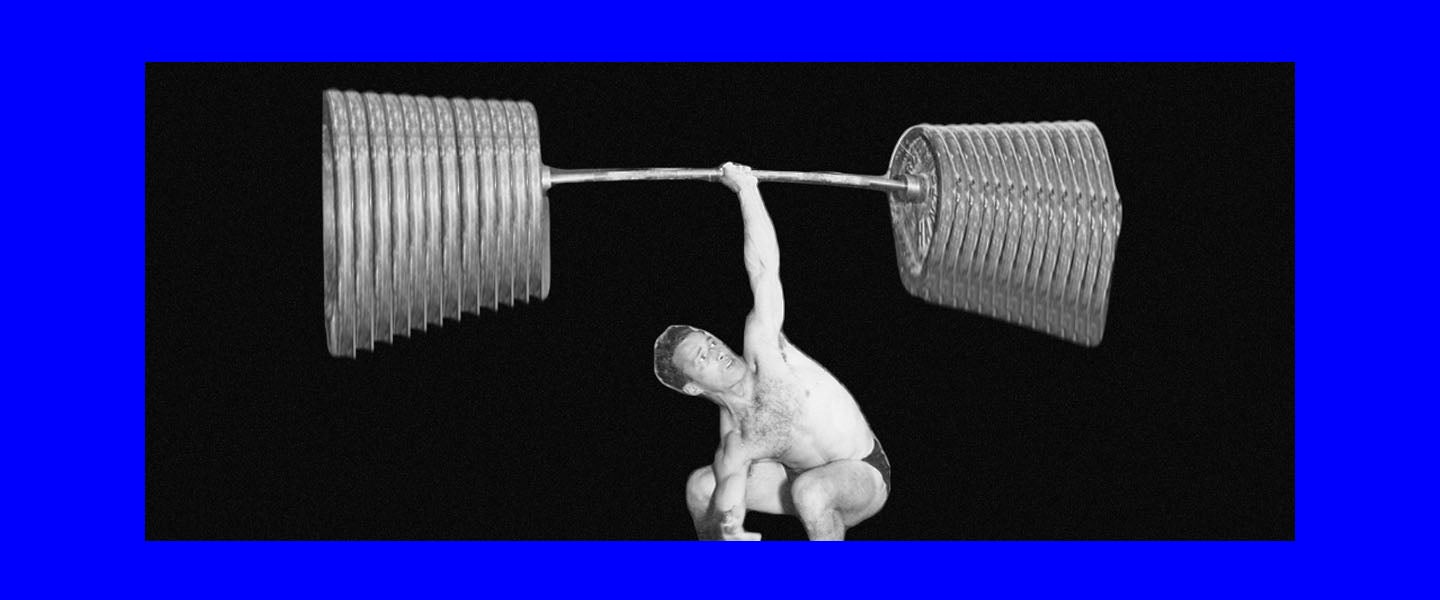When I first wrote “The Fake Strongmen of Instagram,” my aim was pretty simple: As a weightlifter myself, I wanted to inform people about the history of this deceptive practice — the same strategy of using empty plates and barbells that help random “fitspo” celebrities peddle their worthless protein powders and peptides dates back to Vaudeville-era strongmen like Eugen Sandow — and get them to inspect their Instagram idols a bit more closely.
I succeeded on the first count — hundreds of thousands of people read the piece. The second? Not so much. In the ensuing 10 months, noted fake weight users Brad Castleberry and Gracyanne Barbosa gained as many followers as I did pageviews, getting even more jacked in the process and creating an even larger audience to which to peddle all kinds of worthless garbage.
“Castleberry and Barbosa are both famous, or at least Instagram and YouTube famous, and so, their brand gambles have paid off,” says Ben Labe, a business analyst I asked to evaluate the incentives/disincentives for using fake weights on fitness-oriented social media accounts. Labe, formerly a PhD candidate in economics at the University of North Carolina whose research focused on institutional responses to financial incentives, believes that the duo — and others liked them — made a wise gamble that paid off the way it does for other entrepreneurs starting from a low foundation. “What difference does it make, honestly?” he asks. “It’s stupid, but if it puts them over the top, it’s no different than using steroids and claiming not to. If it’s more lucrative to stay silent about steroid use than to admit to using them, or to lift more weights even if they’re fake, why not do it?”
Labe reviewed Barbosa’s and Castleberry’s Instagram accounts and noted that the content has changed significantly since March (more or less when I first wrote about them). “If you examine Gracyanne’s account, for example, she appears visibly more muscular and defined,” Labe explains. Such a transformation is good for business, too, he adds: “She has seven million followers, so that account is worth a pretty penny, and if she’s grown it by a million or so this year, she has done her job. People with that many followers can command decent sums for sponsored pictures.”
Castleberry’s Instagram, by contrast, features more images of him posing and far more videos of him performing semi-believable athletic feats than it does the heat-seeking fake plate tableaux for which he’s Insta infamous. “Sure, there’s a video in November in which Brad shrugs a lot of weight, but maybe he could do that?” Labe says. “I don’t know. It seems like his page has settled into a predictable rhythm, with just under a million followers. In September he even posted a picture of himself lifting obviously fake weights, so he’s clearly in on the joke.”
Not everyone thinks it’s funny, though. Budding fitness star Kenny “KO” Boulet has made a name for himself by calling out “fake naturals” who use steroids to improve their gains and “fake strongmen” who load their bars with empty plates to impress their followers. But unfortunately, he, too, has been exposed for a host of sins. Despite his “fake natty” crusade, Kenny KO had his secondary YouTube channel shut down because he was apparently using it to sell selective androgenic receptor modulators, aka “SARMS,” or research chemicals that may increase testosterone and were also the subject of a recent warning letter from the FDA. Similarly, he was called out by fellow bro scientists for committing one of the oldest and laziest tricks in the book: photoshopping his Instagram pictures to make his waist smaller, his arms thicker and his girlfriend’s backside more ample.
None of this, of course, surprises Labe, who has spent years analyzing how fundraising pressures force nonprofits to operate far beyond their mission statements when chasing grant money. “You can really only gain from using fake weights, provided they’re ancillary at best to your overall fitness brand and their use is largely unacknowledged or ‘winked at’ in a clever way,” he explains. “The costs are obviously slight. That said, for Kenny KO, whose brand is moralizing about fake weight usage, any deviation from the straight and narrow could be much more costly because he’s been exposed as a person who isn’t living up to his own example.”
Nevertheless, he and others have risen awareness of fake weights, at least among people who object to their use. Vanessa Adams, a long-time bodybuilder and Strongman athlete who manages a supplement store in New York, made a point of always using real weights in her photo spreads and dislikes both the relatively widespread trend of using fake weights as well as the largely blasé reactions their use prompts from casual fans. “When I was doing professional photo shoots, I didn’t use the weights I could max out with, but I did use real weights,” she tells me. “To me, someone like Gracyanne [Barbosa] is a joke, given that no one squats more than 135 pounds with a face as calm as hers.”
As for Castleberry and Barbosa themselves? Castleberry still hasn’t responded to my interview requests. But in June — about three months after my story first ran — I finally received a terse reply from some sort of Barbosa representative. “Gracyanne does all of the exercises you see in the videos,” it read.
And I suppose that’s true enough: This dedicated fitness influencer lifts the weights you see her lifting (fake or not), and what you make of those routines is left to the strange magic her influence works on your imagination.

